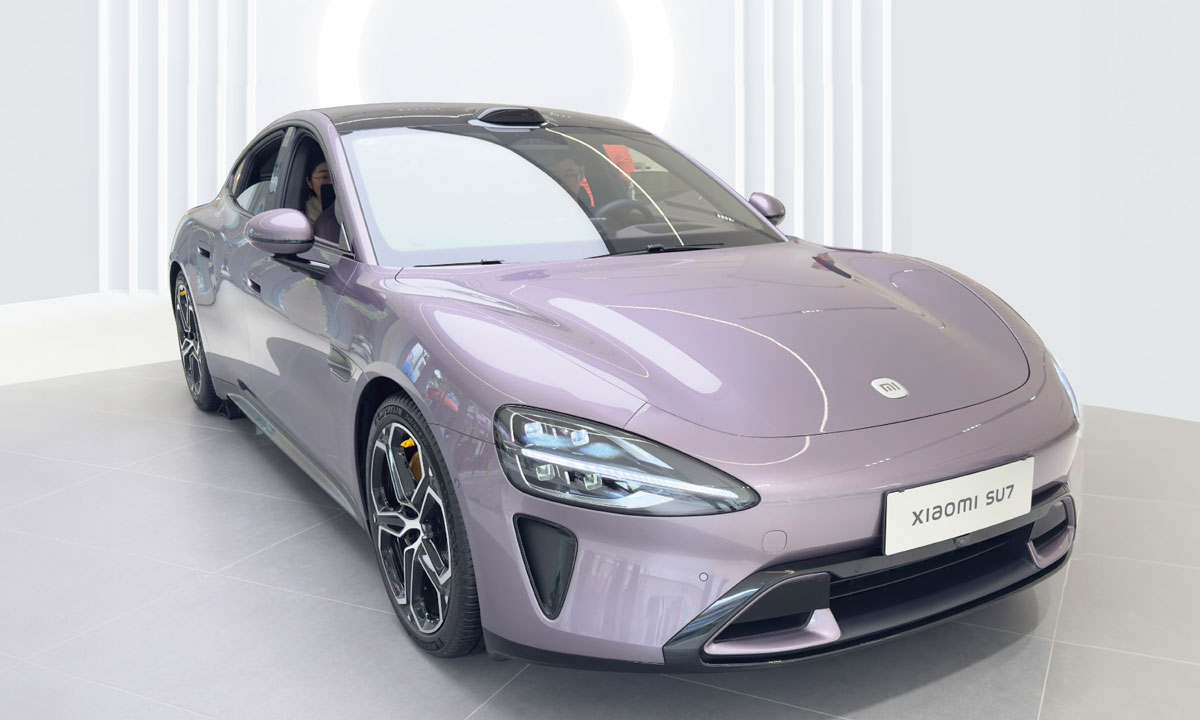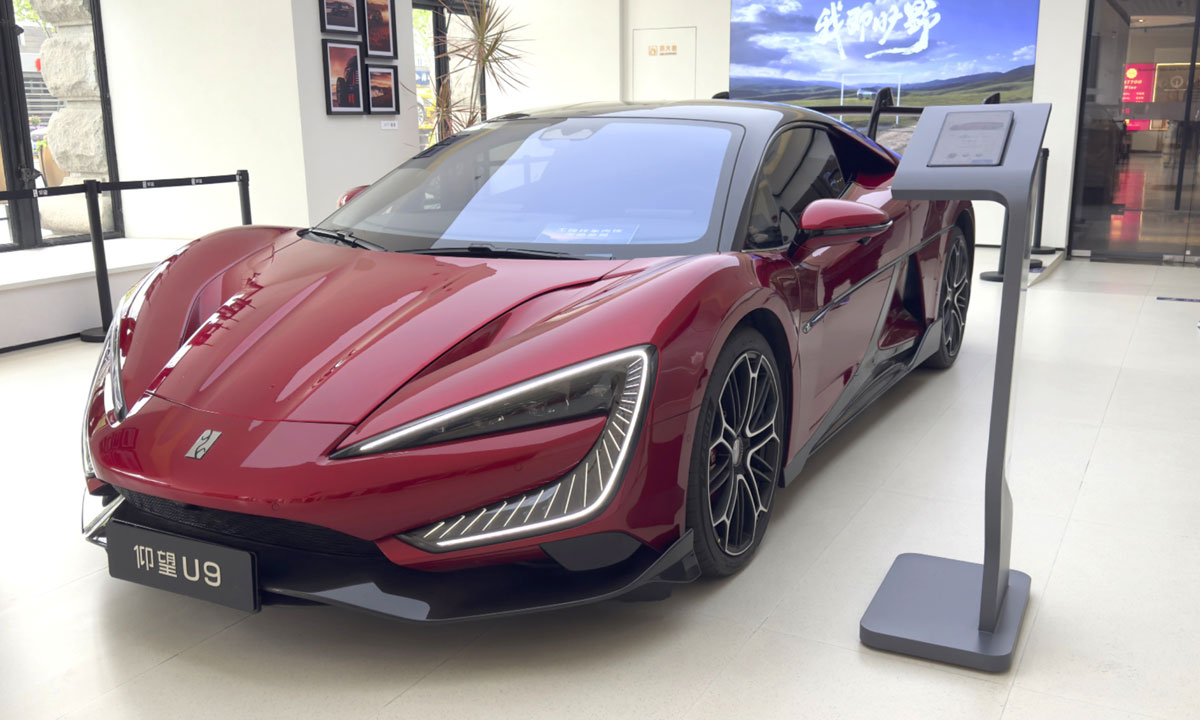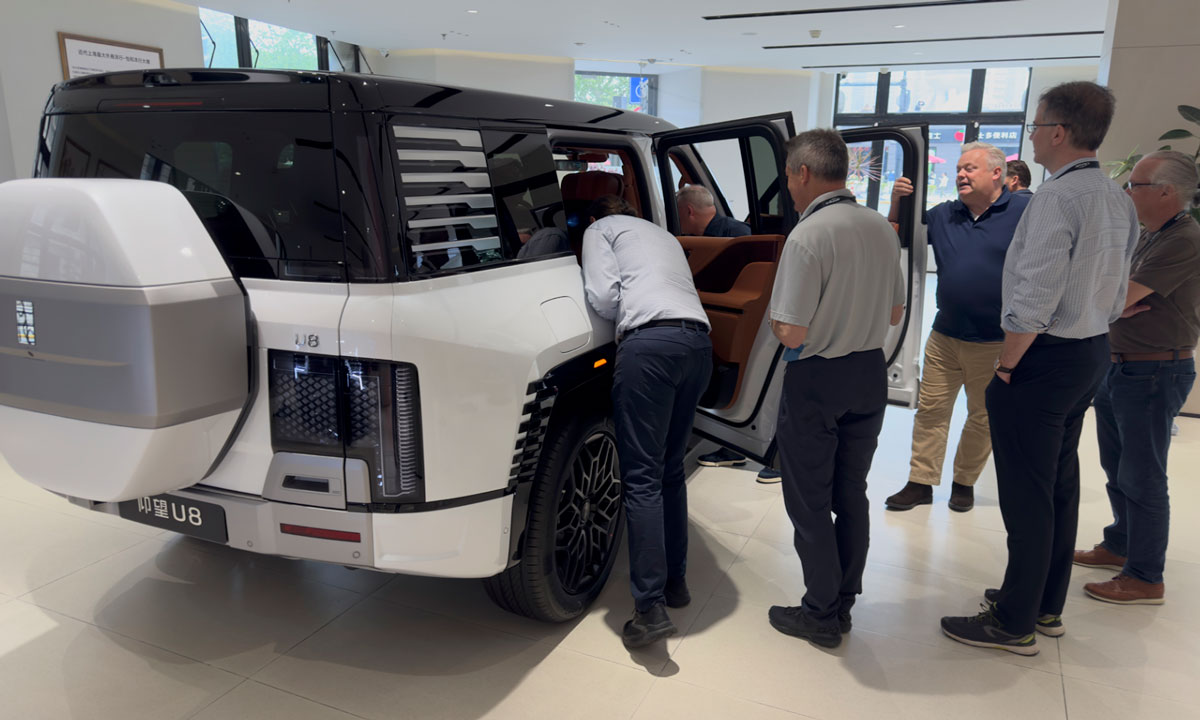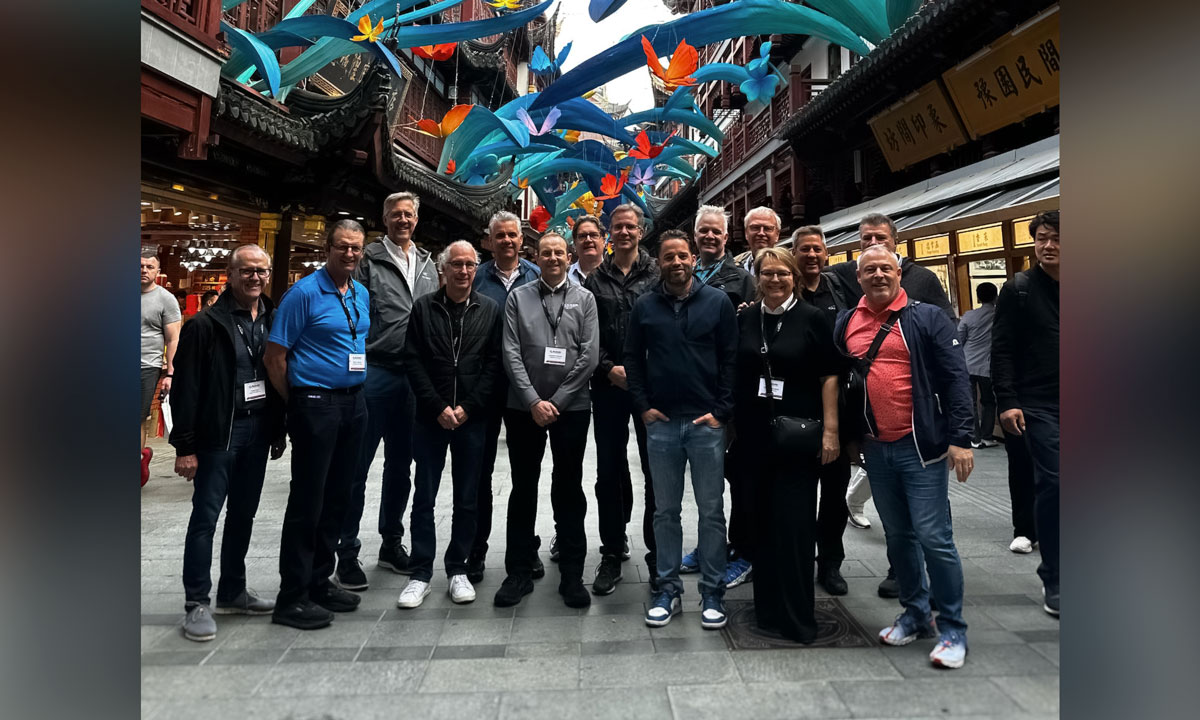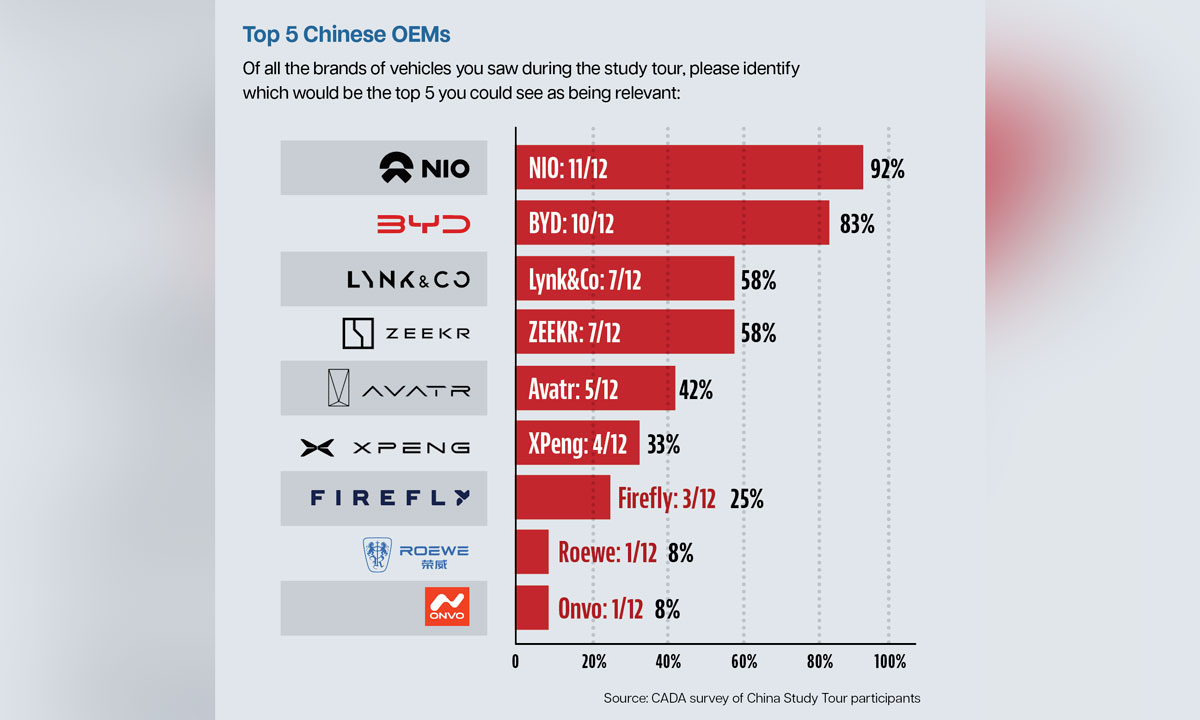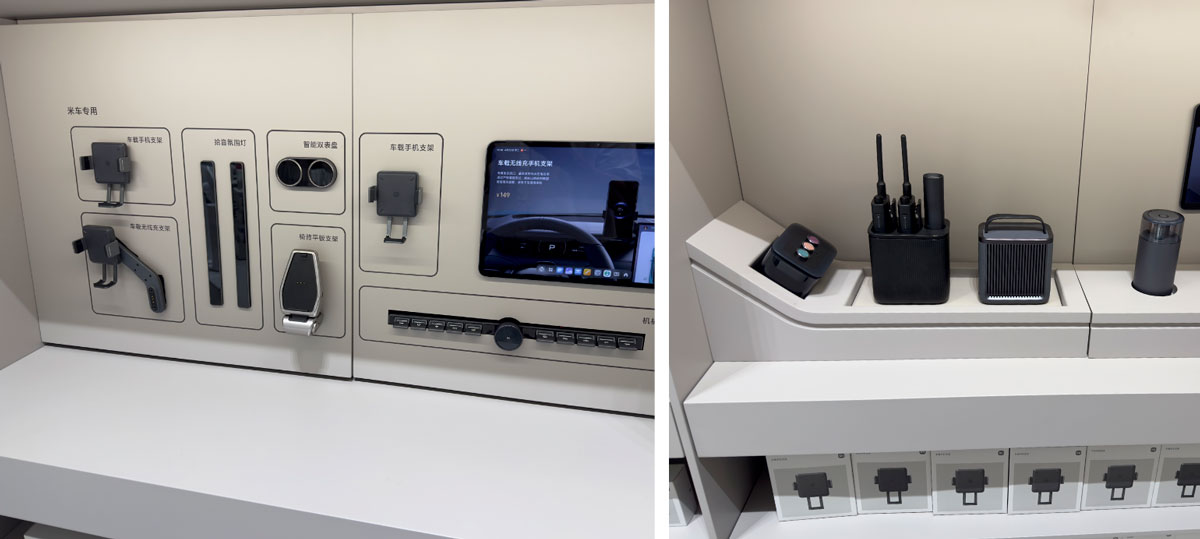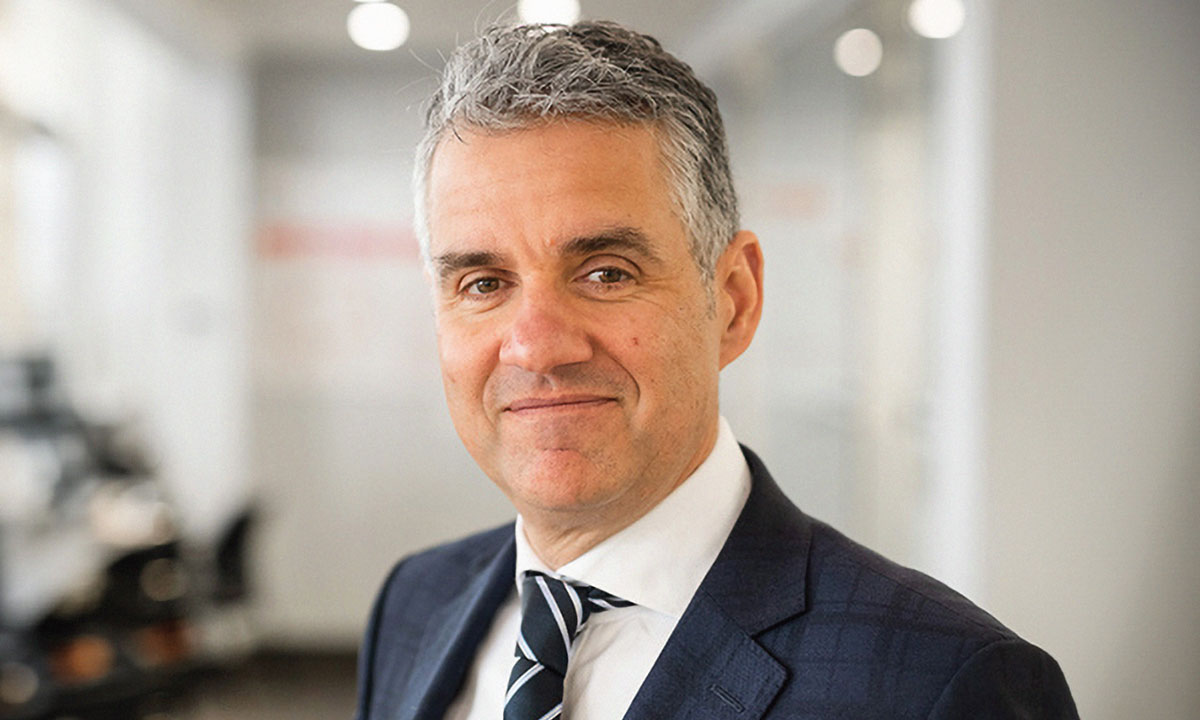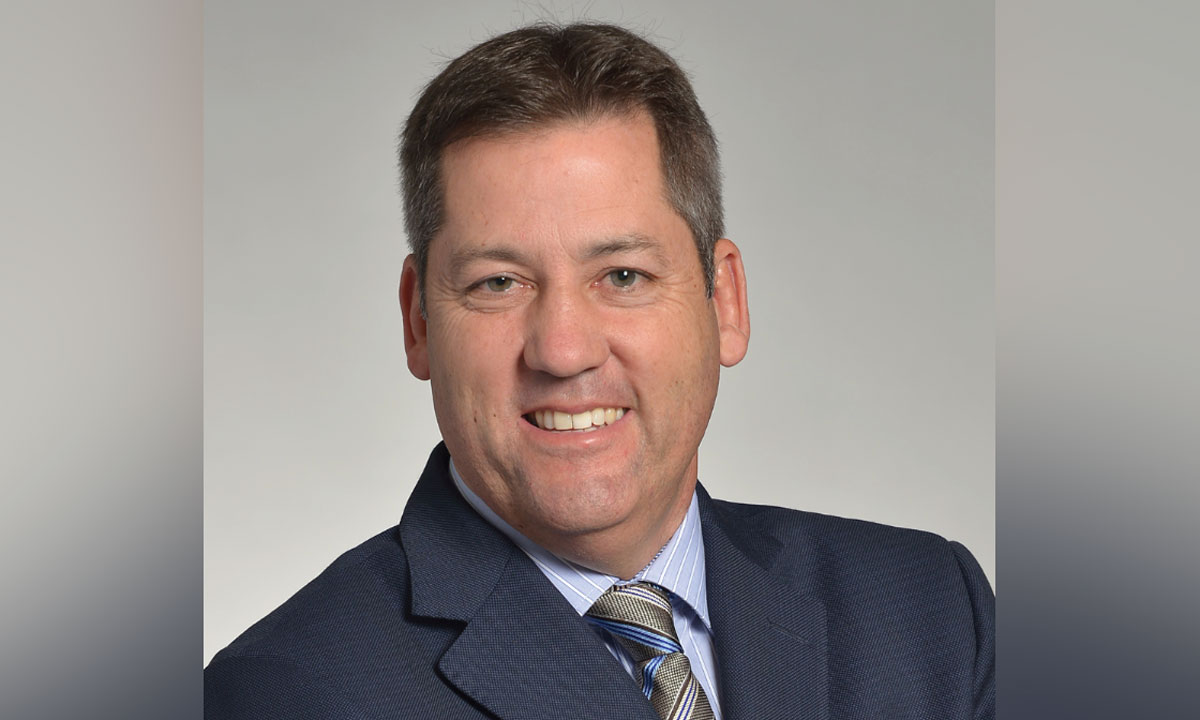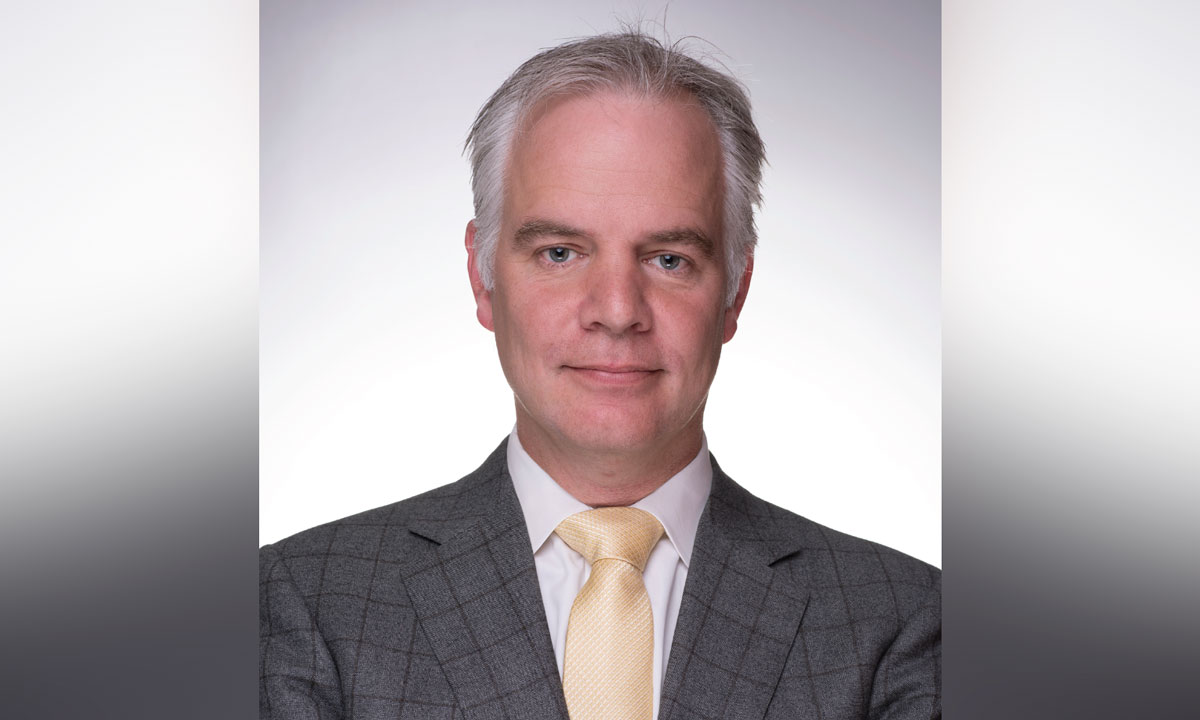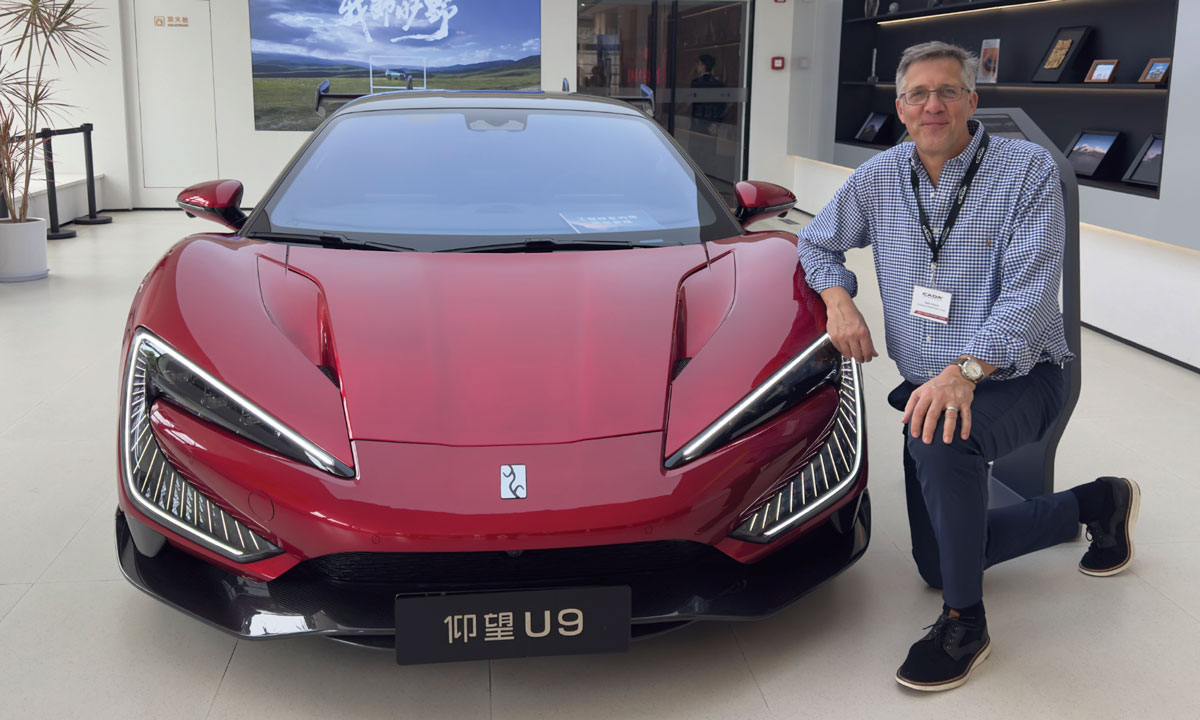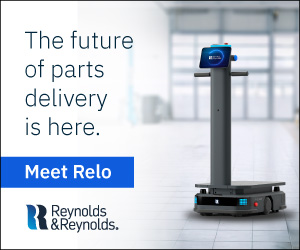引领世界 (Lead the world)
A group of Canadian car dealers took an intensive deep dive into the inner workings of the Chinese auto industry in April with a five-day study tour led by the Canadian Automobile Dealers Association. They came back home with eyes wide open and are encouraging their fellow dealers to go check it out for themselves. If one day the Chinese carmakers do arrive in Canada, knowing more about them just makes good business sense.
When it comes to business and politics, the Chinese are known for playing the long game. When it comes to automotive, their long-term goal is clear: they want to dominate the world — in global vehicle production, exports, technology and innovation.
The rapid ascendency of the Chinese automakers has people throughout the global auto industry increasingly curious and concerned. Those concerns are well founded because the rest of the world isn’t yet ready to compete head to head — particularly on price.
In 2023, China eclipsed Japan as the world’s largest exporter of vehicles. In 2024, they exported more than 6.4 million vehicles — a 23 per cent growth from a year earlier. They aren’t just selling EVs either, as only 21.9 per cent of their exports were battery electric vehicles (BEVs) or plug-in hybrid electric vehicles (PHEVs).
The dealers went right into the heart of the auto industry — mostly in and around Shanghai — and came back with new perceptions and perspectives.
The heart of this story is a dramatic surge in production fueled by purposeful government investment. This created a hypercompetitive environment of between 90-100 Chinese OEMs that produced an astonishing 31 million vehicles last year. (It’s so fluid, no one can even agree upon how many OEMs are operating.)
Some of these are established giants, like BYD, Geely and Chery, and others are upstart niche players. They have one thing in common: they are fiercely battling for survival and relevance. A consolidation is inevitable, and it remains to be seen who will emerge when the dust all settles.
So what does that all mean for Canada — and for Canadian car dealers?
That’s exactly what a group of 13 Canadian car dealers set out to find out for themselves this spring, when they took part in a five-day China Study led and organized by CADA, their national dealer association.
The trip was led by Bruce Rosen, CADA’s Executive Director of Industry Relations, and the only non-dealer delegate was Niel Hiscox, Publisher of Canadian auto dealer and CEO of the consulting and research firm Clarify Group.
The dealers went right into the heart of the auto industry — mostly in and around Shanghai — and came back with new perceptions and perspectives.
CADA and dealers made it clear this delegation wasn’t going to look for Chinese OEM partners or franchises; instead they were going to learn about the rapid growth in China’s auto sector, and to tour manufacturing plants, retail operations and to talk with leading experts.
The question of what will happen in Canada — if and when the Chinese OEMs arrive here — still remains an open question, but that wasn’t a question the delegation was looking to answer.
Canadian auto dealer caught up with some of the China Study Tour participants and asked them to share their impressions in this Special Report on China.
One thing that was consistent in all the interviews, was their excitement to share stories about what they witnessed and in their desire to promote the opportunity to visit China to more dealers.
CADA is considering continuing their study tours and broadening the participation to include more Canadian dealers.
In a post-event survey of attendees, 100 per cent of respondents said they would recommend the China Study Tour to a friend or colleague. Sixty-seven per cent said CADA should organize a similar study tour every year, with 17 per cent saying that it should be done every other year.
China Study Tour Participants
- Mal Barber
- Marc Bourassa
- Steve Chipman
- Michael Croxon
- Patrice Demers
- Craig Dunn
- Mark Falkenberg
- Jonathan Hickman
- Niel Hiscox (Universus)
- Brian Leggat
- Jordan Romeril
- Bruce Rosen (CADA)
- Alexandre Saillant
- Charles Saillant
- Debbie Yannakidis
Goals of the China Study Tour
- Designed to engage participants in an immersive exploration of China’s automotive market
- Crafted to deepen their knowledge and broaden their perspective on China’s approach to EV innovation
- Program offered insights into the technology, design and retail experiences of China’s advancements
- Guided showroom visits, interactive sessions and expert exchanges
- Participants gained a comprehensive understanding of the strategies shaping China’s EV landscape
- Takeaways that were designed to inform and inspire perspectives on EV policy and innovation
Source: CADA
From an EV standpoint, they’re the most advanced in the world. It’s remarkable. The technology, the whole in-car electronics experience, the quality of the manufacturing — it is absolutely world-class.
— Niel Hiscox, President Universus and Clarify Group
China Study Tour Agenda
DAY 1
- Overview of Chinese EV ecosystem
- Meet Trade Commission Services reps from Consul General of Canada
- EV retail store visit NIO and Li Auto
- Visit Huawei Global Flagship Store
DAY 2
- Visit Xiaomi, Li & IM EV retail stores
- Digital Retail Supermarket of Alibaba
- Meet with eVTOL representative
- Discussion with Lei Shing, Hong Kong Auto Group owner / operator
- Visit architectural offices and site visit of 1,000 Trees Urban Development
DAY 3
- Visit NIO manufacturing plant
- Visit VW Anhui manufacturing plant
DAY 4
- Joint presentation and meeting with Australian Dealers Association
- Visit retail operation in Ludong
- Connie Cha, OMD China on changing consumer behaviours
DAY 5
- Tour Auto Shanghai 2025 auto show
- Meet Canada’s Consular General
Source: CADA
Bruce Rosen, CADA’s Executive Director, Industry Relations
Our China visit was always labeled as a study tour. We didn’t go there looking for franchise opportunities. We did go there to make sure everybody understood what is available there, and that if there’s any kind of future for Chinese automobiles in Canada, then dealers should have some advanced knowledge of what they might be looking at.
There wasn’t any misconception as to why we were there. We wanted to make it perfectly clear that if the Chinese were to come to Canada, that it would be done through a dealer association and dealers. They understood that.
We had a wide range of meetings from embassy staff and Consul Generals to our Australian dealer association counterparts, to factory visits, and retail facilities. This wasn’t just a haphazard group—we met with people chosen for specific reasons.
We wanted to make sure our dealers experienced the modern nature of what China has to offer — on multiple fronts because they are all connected. Retail is connected to automotive and automotive is connected to technology and innovation. Design is connected to all of that.
There are a lot of wonderful things happening in China, whether it’s in AI or in interfaces, robotics or automotive. The pace of change in China is unlike anywhere else. So we wanted to get our dealers to really understand why they are where they are, how they got there, and a little bit of insight into where they’re going.
The big eye opener was the availability of product — and it was a very big eye opener for everybody. I lived there for 10 years, and now the level of product in the marketplace, specifically on EVs but not only EVs, is incredible. When you looked at the products, they were exciting.
A big ‘aha’ moment was touring the Shanghai Auto Show. I think my legs still hurt. I walked 27,400 steps on the Friday of the auto show. When we got to the show we encouraged all the dealers to visit the manufacturers they currently represent in Canada, and to look at their cars available in China. We told them to ask themselves: ‘do you have these products in Canada?’ If not, do you think that you should? Because now’s the time to raise your hand if it can be done.
They’re all nice to look at and I’m sure they’re all nice to drive, but the interface is far superior to most western manufacturers. The consumer experiences between their mobile device and their mobility device are far superior to what we’re able to offer here. They have a very wonderful user interface.
The Chinese are not afraid to do well at the bottom end of the price spectrum, but they’re also venturing into the mid and high point, which I think is smart thing because they also need to make money.
I see so many manufacturers bragging about their zero to 60 times. I don’t know that the consumer actually cares. It sounds nice, but it’s not real. We need to prepare today for who will be looking for cars tomorrow, and an exhaust note is probably foreign to most of them. They don’t know what the smell of gasoline and oil is like. It’s not important to them.
We need to prepare ourselves for the mindset of the new buyers. Whether that’s Chinese cars or some wonderful manufacturers from the U.S. or Europe, is irrelevant. Consumer change is coming and we need to be ready for it.
Michael Croxon, President and CEO, The NewRoads Automotive Group
Ileft China with the impression that I needed to go back every year to keep pace with what’s going on over there, both in the automotive world and the technology world because it just appeared to be moving so fast that the only way to keep up to date would be to go back and visit.
I think just in a general sense, and this is certainly outside of the car industry, the way that China is cast in our minds from a media perspective, particularly around human rights, particularly around the way people live, particularly around the whole COVID lockdown, in my estimation, is overblown and inaccurate given what we saw in the city of Shanghai.
I was completely blown away by the city of Shanghai in terms of how modern it is, how contemporary it is, but how this city of 25 or so million people just appeared to work on so many levels. The subway system, the road system, the restaurant variety, the malls, everything we saw was just like, ‘wow!’ This is not necessarily what I imagined and it was far, far more impressive than what I thought I would see going over.
The two factories that we did see, which were NIO and Volkswagen, didn’t appear to be an environment where workers were being oppressed or working in conditions that were in any way uninhabitable. They were as good, if not better, than the sort of conditions that workers in western factories work in.
I went over with an impression that I was going to see a bunch of cheap but functional automobiles running around the streets of Shanghai, and we certainly saw some of that. But what we saw more of, were very well designed mid-market automobiles that were impressive from a technology standpoint and a design standpoint. The perceived quality of the paint finish, interior luxury and design, were equal to anything you’d see in North America. Where they were ahead of anything we see in North America, was in their screen technology and the way that their vehicles integrate with the rest of their lives, in large part via their smartphones.
One would assume that there’s a consolidation coming because I can’t imagine that all too many of them are making any money in today’s environment just because of the hyper competition that apparently and evidently exists in their own market. So that’s good for the Chinese consumer, because they get great automobiles at cheap prices — it’s not so good for those who are making them or those who are selling them who are exposed to this hyper competition. We’re led to believe that no one, whether it be manufacturers or retailers are making any money over there. One large retailer we met over there claims the only way they make money is through government subsidy or manufacturers’ assistance.
I think as with any partnership with a manufacturer, you need to do your diligence and go into it with your eyes wide open. So I think the understanding that we got from the Australians who we met down there is that the Chinese OEMs are very, very aggressive and understandably so given the overcapacity in their domestic manufacturing business. They won’t stop until they achieve their market share gain. And as a dealer, if you’re a casualty along that road, I guess you’re a casualty along that road.
Marc Bourassa, Dealer Principal, Cadillac of Laval
China was incredible just to see the way they do things. Not only the car business — everything. They’re so focused on everything they do. They do amazing things, but the main takeaway is the Chinese are ready to take on the world.
Their ability to innovate and to create at such a fast pace is amazing. They have the capacity to build cars, and they have the capacity to build car plants in 17 months. That’s impossible here. You wouldn’t even get an environmental permit for water usage in 17 months here.
They’re very agile and focused on everything they do. We’ve heard about it before, but when you see it firsthand, it’s amazing. The vehicles are superb. The interiors are very customizable. Most of all, it’s the connectivity. Everything is connected.
They started by copying what we’re doing, but then they brought that to a level that now I guess we are going to have to copy some of the things they’re doing. When they do a five-year plan, you can be sure it will be done in the next five years.
I guess it’s not a question of if they’re going to come, they’re probably going to come to Canada one day and we’ll see what we’re going to do with the tariffs. But we need to be ready. We need to organize ourselves and make sure they’re going through a dealer franchise network system. We have to work with these guys to make sure that they’re not killing our market.
In Europe, they do have tariffs on Chinese cars, but it’s not a 100 per cent tariff. They’re playing with that number just to make sure that cars are coming at the right price. If Canada is one day open to bringing more Chinese cars into our market, it’s something that we are going to have to do.
I think we’re doing it the right way, but we really need to have CADA involved in whatever decision that we’re going to make with China, just to make sure it comes about the right way if it happens. That’s why we have an association. If these guys are coming, we need to understand how they’re going to come, the way they do things, the way they go to market. We really need as an association to understand those things. Our association needs to understand the market and make sure that we’re going to do it the way dealers want it to do it. You don’t want governments to make all the decisions.
It’s exciting and scary. You have both worlds. It’s very exciting to see what they’re doing. We’re all dealers and we’ve been in the car business for a long time. But at the same time, it is very scary. You don’t want these guys to come in with no tariff, or they’re going to kill some part of our market for sure. It’s exciting to see the new things, but at the same time, we don’t want them to come right now without any control.
Charles Saillant: Co-President of Groupe Saillant, Québec City, Québec
My brother Alex also went on the trip to China. When we returned, I asked him: ‘Would you have believed me if I told you about all the things I did, and what I’ve seen during those six days in China?’ And you know what he said? ‘No. I wouldn’t have believed you, Charles.’
It’s the kind of trip where you have to see it for yourself. I had the mindset that I wasn’t going to see a third world country, but one that was developing. I was just blown away with what I saw there. In several aspects, they are ahead of us now.
The Chinese government subsidizes the Chinese OEMs but they really let the market decide the winners. There are so many OEMs now but I think down the road there will be maybe 12-15 still alive, and the top five will be too big to fail and the government will be there for them.
One thing I learned is that 59% of Chinese buyers today have never bought a car before. They don’t care as much about reliability or driving performance — they care about the technology, they care about the connectivity. That’s the holy grail all the manufacturers are pursuing right now, for consumers to be connected in time with all the information they need at once.
In terms of connectivity technology, they are not just a few steps ahead of us, they are ages ahead of us. They have apps that we can’t even dream of right now. They call them Super Apps. They have some that suggest a good restaurant, display menus, and you can order while you are driving and the food will be ready when you arrive.
Another app will know you are due for a haircut and find a local spot and book a spot that fits your schedule. Everything is really connected, it’s incredible. You can’t get bored in a Chinese car with the technology they have right now, it’s just overwhelming.
For any electric cars, SUVs, plugins, these guys are serious. I think the tariffs are a good thing, but that’s just a temporary measure. I hope it’s going to give enough time for the legacy OEMs to adapt quickly to make sure we can compete with the Chinese and at the same pace as China.
The trip was not about making deals to bring the Chinese here. If you are a dealer, and you think you’re going to spend the next 10 years in the industry, it’s really important to have a good understanding of what’s coming.
Most of the Chinese OEMs have used a dealer-based model not an agency or Tesla model. So there are opportunities. We are dealers and so we’re going to sell the cars that are the best cars to sell in the market at that given time. But obviously I understand that we put investments into our shops and the brands and we want to be loyal to those brands.
In terms of the dealership facilities we saw, they are different. No windows, just concrete, no fancy tiles, not even windows. Sometimes they were in the basements of shopping malls. Maybe they’re going to change when they’re going to have to compete with very nice showrooms from legacy OEMs. But in China, all the money is spent on the cars.
Jonathan Hickman, Vice-President, Hickman Automotive Group
Ididn’t go to China with a lot of pre-conceived ideas about how it would be. I went with a really clean mind. I didn’t do research, I wanted to let it happen, go with the flow and see what happened.
I was shocked with how fast they move at everything. Not just in the auto industry, in the way they think, the way they interact. They are so forward thinking, I wondered if I could keep up with them. I’m just not used to the speed they work at and how they advance things at such a lightning pace.
But also well thought out. It’s not just ‘let’s do it.’ They’ve thought it through and then made it happen. They don’t sit and second guess themselves. They don’t bog themselves down. Once they’ve made the decision and have made a good plan, they act upon it.
I did think we were going to see cheaply-built, mass-produced vehicles. Vehicles that they thought the consumer wanted. It was amazing to see the technology they put in. They didn’t make it so much technology that you got lost in the car. You were able to customize your car way more than you can customize cars that we see in Canada. The cars had great styling. They used such interesting colours and it made their cars much more appealing.
I do believe that they see North America as being a very important market to get into and therefore they can’t come in and make a mistake. They don’t like making mistakes. So I think when they do come to North America, not when or if, but when they do actually come, it is going to be well thought out and it’s going to be based on dealers’ profitability, working with dealers. We probably won’t see as many manufacturers as they currently have. After they consolidate their manufacturers, the competition won’t be as strenuous as it is now.
This isn’t all new to them, they’ve been building cars for years. They reinvent themselves at a lightning pace whereas we get stuck in the legacy mindset, ‘we did it that way because we always did it that way.’ Whereas I think China considers what the world wants and says we will change for them — they don’t expect the world to change for them.
Prices are everything in Canada. If they can come in at the right price point, they have attractive cars and I think they have cars that would meet the demand of North America or Canada.
Niel Hiscox, President Universus and Clarify Group
In a lot of ways they’re leading the rest of the world. I think you have to go over there and see for yourself. From an automotive manufacturing standpoint, China got started with joint ventures with foreign legacy brands. Now they’ve reached the point where they are as good. The sheer level of competitiveness and investment that’s been made over there has driven them further. Certainly from a product standpoint, going to China is like taking a trip to the future. They are that advanced. The product is incredible.
From an EV standpoint, they’re the most advanced in the world. It’s remarkable. The technology, the whole in-car electronics experience, the quality of the manufacturing — it is absolutely world-class.
The technology isn’t just in the vehicles. They’ve built battery swapping stations and the way those operate is like driving into a carwash. You don’t even have to drive in. You park your car outside the swapping station, the car will talk to the swapping station, it will automatically drive it in, park it, a robot comes up underneath and removes the battery. One of the pre-charged ready batteries is then inserted into it. The whole thing takes about as much time as it would take to fill a gas tank. When it’s done, your car drives back out, parks in front and says, ‘I’m ready for you.’
The Chinese OEMs have come from a lot of different paths. Some have come from industrial companies, and when the Chinese government identified automotive as a strategic pillar for the company, a lot of funding was made available. A number of other firms have come from the consumer electronics space. So companies like Xiaomi and Huawei were cellphone companies. What’s interesting is they have brought the whole ecosystem mentality that the cellphone companies have to the automotive space. There’s a seamlessness and an integration that we just don’t see over here. And it’s remarkable to see how that manifests itself in the car itself and in the other products.
Dealers know good product. My sense from the conversations I had with dealers on the trip, is that it was very eye opening, and that there’s some really exciting product here. Things are changing so fast over there that a year from now it’s going to be different in terms of the pace of new product development, product innovation, changing retail environments and customer experience. Part of the lesson I learned was this isn’t a one and done. We’re going to go back a year from now and there’s going to be a lot of new things to see again.
It was really interesting to have the Australian dealers and the Australian dealer association there during our visit. Because Australia no longer manufactures vehicles domestically, it made sense for them to open their market up to Chinese OEMs and give consumers more choice. Now the Chinese product is at somewhere north of 20% market share in Australia.
Dealers there have had the experience that Canadian dealers don’t yet have. I think it’s fair to say it’s been a challenge. Australia is a mature market, they’re not selling more cars. So if they’re selling a lot more Chinese cars, they’re selling a lot less of something else. There’s no question that the dealers there are finding pressure on some of their other brands.
